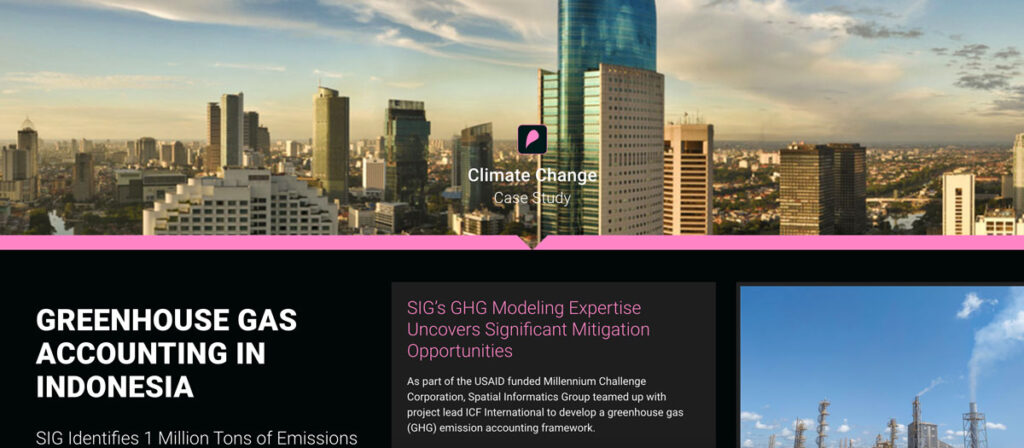Carbon Dioxide Emissions Calculations For Forest Biomass Energy Projects Are Dependent Upon Regionally-Specific Conditions

An issue brief recently released by the Natural Resource Defense Council (NRDC) highlighted the importance of regional studies of biomass energy development. The brief relied on a model developed by the Spatial Informatics Group (SIG) to assess the lifecycle greenhouse gas emissions of energy derived from forest biomass in a nine-state region of the southeast United States. The model built on prior work conducted on behalf of the Southern Environmental Law Center and the National Wildlife Federation in 2012.
Greenhouse Gas Accounting in Indonesia

As part of the USAID funded Millennium Challenge Corporation, Spatial Informatics Group teamed up with project lead ICF International to develop a greenhouse gas (GHG) emission accounting framework.
Low-Risk Bioenergy Can Be A Critical Climate Solution

A group of bioenergy experts, including several members of the SIG Team, are pushing for its use to comply with the newly final Clean Power Plan claiming low-risk versions of the energy source offer a host of benefits ranging from reducing greenhouse gas emissions to restoring degraded lands. Read their full opinion piece here.
Mapping Forest Degradation In Nepal With Remote Sensing

Under international climate change agreements, countries must estimate greenhouse gas emissions related to deforestation and forest degradation.
In cases of deforestation—when trees are cut and replaced by annual crops, for instance—the change in land cover is clearly visible. Forest degradation, by contrast, is more subtle. Trees are lost but the land remains forested and often recovers quickly—making the changes hard to detect.
With Biomass Energy, The Carbon Savings Are In the Details

Biomass energy, Michael Moore’s new documentary Planet of the Humans faces criticism from environmentalists for using outdated data and simplistic analyses on renewables.
Hot But Not Bothered: Urban Green Space Leads To Better Health, Social Benefits

Decades of scientific research have been suggesting that humans accrue many positive benefits from nature, whether that nature be in an isolated preserve, in urban green space within the confines of a city, or simply with a look at a painting of a forest.
For Indonesia’s Wildfires, There Are No Easy Solutions

This week, we’re blogging about SIG’s work on reducing wildfire impacts in Indonesia and California. Fires in both regions have similar financial and health impacts, but differ in behavior. In Indonesia, even the ground itself can burn, requiring unique management approaches. Lessons learned in each place can inform solutions in the other.
Low Emission Urban Transportation In Latin America And The Caribbean

Scott Muller, Senior Scientist, led a workshop on Low Emission Urban Transportation in Lima as LAC countries advance climate action plans and targets

